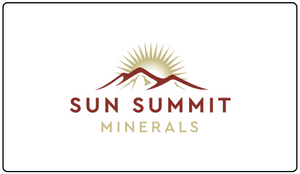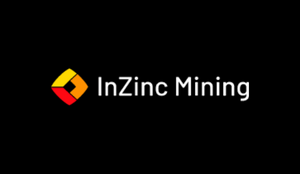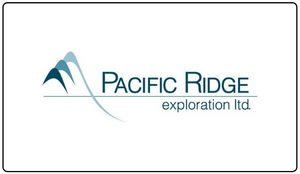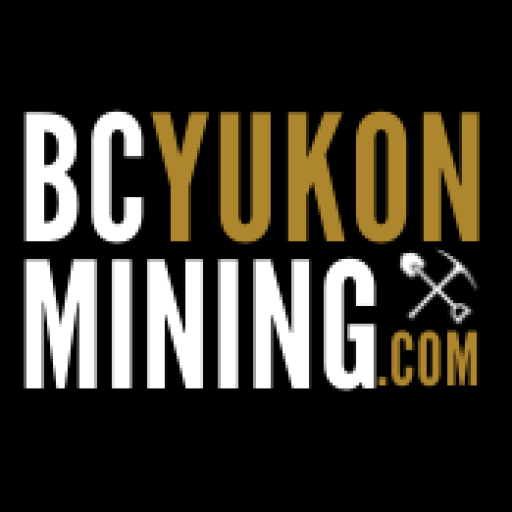News Release – Vancouver, British Columbia – March 2, 2021: GSP Resource Corp. (TSX-V: GSPR) (FRA: 0YD) (the “Company” or “GSP”) announces the final diamond drill results from the Phase 1 2020 drilling program at the Alwin Mine project (the “Alwin Property”) located in the Highland Valley Copper Camp of British Columbia.
GSP President & CEO Simon Dyakowski, commented:
“We are encouraged with the early results of GSP’s first phase of drilling at Alwin. Initial results have confirmed the presence of shallow, high-grade copper as well as its potential for bulk tonnage mineralization. The shallow bulk tonnage potential of the Alwin Mine project is compelling due to the project’s location adjacent to Teck Resource’s Highland Valley Mine operations including its favourable elevation and hill-top topography. Several relatively shallow intersections from the Phase 1 drilling program at Alwin met or exceeded the average grade of the mineral resources reported at the adjacent Highland Valley Mine and provide us with the confidence to continue pursuing Alwin for its potential as bulk tonnage deposit.”
Figure 1: Map of GSP Alwin Project and Highland Valley Copper (Valley Pit)
Based on Phase 1 2020 drill results, the Company intends to complete additional drilling on the Alwin Property with its cash on hand. In preparation for follow up drilling, GSP intends to complete further 3-dimensional modelling to integrate the recently completed drilling data into the existing Alwin Mine model. This is expected to be completed before the start of the Spring and Summer exploration season.
Deep Drilling Highlights:
Hole AM20-10D was drilled from the south (property boundary) to target the deep, unmined portion of the #6 zone, as well as the #1 zone, and to confirm historic mineralization below the unmined portion of the #3 zone, 30 metres north of the #6 zone. Hole 10D successfully intersected the #1 zone at 131.85 m, however, the hole was terminated at 224.4 metres in an unanticipated Alwin Mine exploration drift.
Hole AM20-10E was wedged from 10D at 133 metres and successfully intersected the #1 zone and part of the unmined portion of the #6 zone and lastly the #3 zone. The #6 zone intersection returned 0.81% copper equivalent over 22.6 metres from 287.9 metres including 5.98% copper equivalent, (4.6% copper, 0.6 g/t gold and 80 g/t silver) over 2.6 metres. This is a partial intersection as the hole intersected the zone in the floor of #6 zone mine drift. The hole also intersected the #1 zone which from 132.5 metres returned 0.21% copper equivalent over 13.3 metres.
Hole AM20-09 was collared about 75 metres north of holes 1 and 7 and targeted the centre of a strong medium depth chargeability anomaly and the down dip potential of a 2008 drill intersection. The hole was collared beside an open historic trench hosting copper mineralization. This hole from the surface intersected “Alwin” style mineralization grading 0.195% copper equivalent over 36.6 metres including 1.05 metres grading 3.39% copper equivalent (#7 zone) and from 104.3 metres 0.198% copper equivalent over 22.15 metres including 0.86% copper equivalent over 4.55 metres (#8 zone). The hole had several more copper intersections including from 221.7 metre 0.205% copper equivalent over 7.9 metres including 1.01% copper equivalent over 1.1 metre and from 808.6 metres 1.02% copper equivalent 0.6 metre.
View: Alwin 2020 Phase 1 Drill Program Plan Map
Link: Section view hole AM20-09 and AM20-10D/E
As this hole was collared into mineralization the at the surface intersection is only a partial one and the 60+ metre strike between AM20-01-07 and hole AM20-09 remains untested.
The 2020 drilling indicates that many of the higher-grade copper intercepts contain significant (over 0.02% to 0.13%) molybdenum with minor rhenium. GSP expects to continue exploration to expand the unrecognized, at surface bulk tonnage, potential of Alwin Mine portion of this property.
In addition to the main Alwin Mine target the property hosts several incompletely explored porphyry copper-molybdenum exploration targets to the north and west of the mine. The Alwin deposit’s known east end is less than 2.5 km west of and 270 metres higher than the Valley pits west edge of Teck Corporation’s Highland Valley Mine, the largest open-pit porphyry copper- molybdenum mine in Canada. The Highland Valley Mine had a reported 0.278% copper head grade according to a 2019 presentation (https://www.teck.com/media/Teck-Highland-Valley-Copper-Site-Visit-2019-HVC-Presentation.pdf) and Teck Resource’s 2020 Annual Information Form (“AIF”) filed on SEDAR reports mineral reserves at the Highland Valley mine using a 0.09% CuEq cutoff grade.
The Phase 1 program was designed to infill between the surface, in between and under both shallow and deep historic drill or mine intersections and to test for additional mineralization north and south of the known deposit. Significant geological knowledge was gained regarding copper and molybdenum mineral zonation, timing, and similarities and differences with relation to the Valley-Lornex hydrothermal system.
Shallow Drilling Summary:
The previously released shallow drilling results were recalculated to produce copper equivalent results using copper, gold, silver and molybdenum results. At the 225 m long shallow unmined portion of the #4 zone at the east end of the Alwin Mine high grade copper was intersected in 6 of 8 short drill holes reported highlighted by hole AM20-02 which returned 3.00% copper equivalent over 3.95 meters starting at 19.6 meters. In total 9 of 11 holes intersected shallow bulk tonnage mineralization highlighted by hole AM20-02 with 47.35 meters grading 0.31% copper equivalent starting from 5.5 meters to the end of the hole 52.85 metres. Several shallow higher-grade intersections had poor recoveries and the reported grades can only be considered approximate.
View: Alwin 2020 Phase 1 Drill Program Plan Map
Link: Section view holes AM20-01 to AM20-08

Retraction and Correction
GSP has retracted and corrected certain of the previously presented drill results highlights (see news release dated December 23, 2020) as disclosed in the table below:
| December 23, 2020 News Release | Updated/Corrected Results |
| Hole AM20-01: 2.27% copper over 12.1 metres in and 3.22% copper over 4.15 metres | Hole: AM20-01: 0.795% copper over 12.1 metres including 2.11% copper over 4.15 metres |
| Hole AM20-02: 39.8 meters of 0.40% copper starting from 6.40 meters and including 7.30 meters of 1.39% copper | Hole AM20-02: 39.8 meters of 0.283% copper starting from 6.40 meters and including 7.30 meters of 1.39% copper |
*These errors were made by the companies qualified person who accepts all responsibility for the release of these results.
Collar locations are in UTM Zone 10N metric co-ordinates, and depths and analytical results are presented in the three tables below for holes AM-20-01 to 06A, 07 and 08 with a separate table for holes 09, 10D and 10E. 
The Alwin Mine Copper-Molybdenum-Silver-Gold property covers approximately 575.72 hectares and is located on the semi-arid, interior plateau in south-central British Columbia. The historic underground mine, which was developed over a 500 meters long by 300 meters deep by 150 meters wide volume produced from 1916 to 1981 from six major subvertical zones 233,100 tonnes that recovered 3,786 tonnes of copper, 2,729 kilograms of silver and 46.2 kilograms of gold. The average diluted head grade was 1.5 % copper. Gold, silver and often minor molybdenum content is most commonly associated with bornite-chalcocite mineralization that originates from the bottoms and forms the bulk of the individual mineralized zones.
The alteration and mineralization of the Highland Valley hydrothermal system in considered to extend westward onto the Alwin property (see GSP’s news release dated January 30, 2020). The Alwin mineral system outcrops as a hilltop with steep west, north and east down slopes creating a favourable potential open pit strip ratio. Its elevation, relative to the HVC operation make it a potential lower than normal energy consuming operation. The HVC operation as previously mentioned has a current overall head grade of 0.278% copper and run of mine 0.09% copper equivalent cut-off.
Qualified Person: Exploration activities at the Alwin mine project including QA-QC procedures and protocols were designed by and supervised on site by the Company’s exploration consultant Leopold J. Lindinger, P.Geo. of Renaissance Geoscience Services Inc. In accordance with National Instrument 43-101 Standards of Disclosure for Mineral Projects, Leopold J. Lindinger, P.Geo. is the qualified person for the project and has prepared, validated and approved the technical and scientific content of this news release. The Company is attempting to adhere to CIM best practices guidelines in conducting, documenting and reporting the exploration activities on its projects. Mr. Lindinger verified the data disclosed which includes a review of the sampling, analytical and test data underlying the information and opinions contained therein. Mineralization hosted on nearby properties is not necessarily indicative of mineralization that may be hosted on the Alwin property.
Quality Assurance — Quality Control (QA-QC) procedures: The QAQC program was designed and overseen by Leopold J. Lindinger, P.Geo.. and is designed to adhere to exploration CIM best practice guidelines.
The core was picked up by GSP contractors from the drill and delivered to the on site core processing facility or a secure facility in nearby Logan Lake. During the sample identification process the consultant placed two portions of a triplicate pre-numbered sample tag into the core box at the end of the appropriate sample. Two portions (one retained in the sample book) of the triplicate tag had the project name, drill hole #, from and to distance in metres, date of sample, initial of the logger on 2 of the portions. The third portion has only the client name and sample number on it. All core processing procedures described below were completed by independent to GSP consultants and technicians. All drill core samples were sawn in half or quartered with a rock saw, or ½ or ¼ split with a manual core splitter. A ½ or two ¼ portions of the sample were placed into a prelabelled bags and sealed along with the sample and client only prelabelled sample tag portion. The remaining ½ pieces were placed back into the core box into its proper location and orientation. The other tag portion with the client name, from-to, core logger and sampler initials was stapled to the bottom end of the appropriate sample. The final third (book portion) with all the information is temporarily retained by the project consultant for future reference. The samples in the box were separated from each other by staples or screws. The ¼ samples had significantly different tag labels from the original label. The remaining drill core is subsequently securely stored on site, or in Logan Lake B.C. For chain of custody requirements all sealed sample bags were placed into sealed sacks or boxes and delivered to bonded couriers for delivery to the chosen analytical facilities. The consultant inserted quality control samples at irregular intervals in the sample stream, including blanks, reference materials to monitor laboratory performance. The ¼ cut duplicates were made by ½ cutting the to be sampled ½ of the original sample to determine mineralization homogeneity and to monitor laboratory performance. All core was imaged and density measurements made of most well mineralized and adjacent intersections.
The prepared bagged drill core samples were delivered to Bureau Veritas Mineral Laboratories (BV) analytical facility in Vancouver, B.C., for preparation and analysis by independent bonded couriers. The BV facility is accredited to the Bureau Veritas system certification to internationally recognized standards, including ISO 9001, ISO 14001, and OHSAS 45001 and is independent of the Company and the qualified person. All analytical methods include quality control materials at set frequencies with established data acceptance criteria. The entire sample is crushed and 0.25 kilogram is pulverized. Analysis for gold is by 30-gram fire assay fusion with atomic absorption finish with a lower limit of 0.01 part per million and upper limit of 100 parts per million. Analysis for silver is by 30-gram fire assay fusion with gravimetric finish with a lower limit of five ppm and upper limit of 10,000 ppm. A 0.5 gm subsample for all samples was submitted for digestion using BV’s 46 element multi-acid –ICP- ES/MS package. All samples are also analyzed using a 48-multielement geochemical package by a four-acid digestion. Copper reporting over 5000 ppm and silver reporting over 1 ppm are analyzed using their MA-401 package producing % copper, and ppm silver results. The Company detected no significant QA/QC issues during review of the data. Other than poor core recovery of some high grade intersections the Company is not aware of any drilling, sampling, or other factors that could materially affect the accuracy or reliability of the data referred to herein.
About GSP Resource Corp.: GSP Resource Corp. is a mineral exploration & development company focused on projects located in Southwestern British Columbia. The Company has an option to acquire a 100% interest and title to the Alwin Mine Copper-Gold-Silver-Molybdenum Property in the Kamloops Mining Division, as well as an option to acquire 100% interest and title to the Olivine Mountain Property in the Similkameen Mining Division.
Contact Information – For more information, please contact:
Simon Dyakowski, Chief Executive Officer & Director
Tel: (604) 619-7469
Email: simon@gspresource.com











